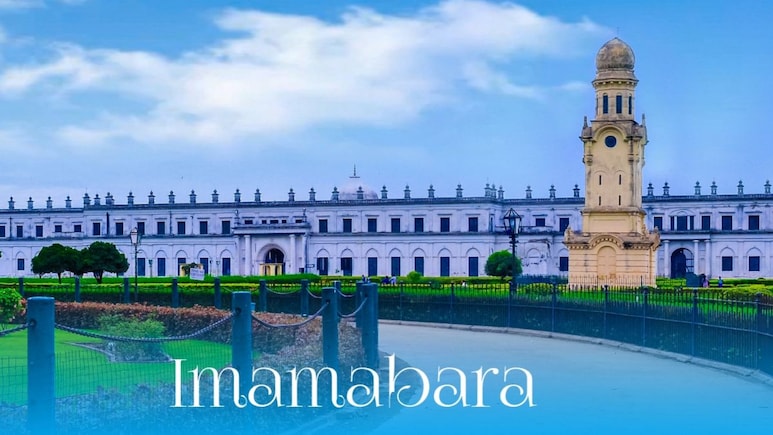
Once the political heart of Bengal and among the wealthiest cities in 18th-century India, Murshidabad remains a hauntingly beautiful reminder of a bygone era. Located along the banks of the Bhagirathi River, this historic town once rivalled Delhi and London in opulence, influence, and architectural grandeur. Under the Nawabs of Bengal, Murshidabad flourished as a capital teeming with power brokers, global traders, artisans, and storytellers. What makes Murshidabad compelling is its layered identity, where Mughal grandeur meets colonial intrigue, and Jain mansions sit beside Islamic tombs. Every mosque, palace and crumbling haveli whispers tales of betrayal, ambition, and cultural fusion.
So, whether you are a heritage buff, a silk shopper, or a curious wanderer, the town rewards you with quiet moments and forgotten narratives.
Also Read: 12 Historical Cities In India That Exist Since Ancient Times
History Of Murshidabad: From Nawabs To The British Raj
Murshidabad rose to prominence in the early 1700s when Murshid Quli Khan, the Diwan of Bengal under Mughal Emperor Aurangzeb, shifted the capital from Dhaka to a quieter settlement called Maksudabad, later renamed Murshidabad after himself. Under his rule and those of his successors, the city thrived as a centre of trade, silk production, and political influence.
However, its fortunes changed dramatically in 1757, when Nawab Siraj-ud-Daulah was defeated by the British East India Company in the Battle of Plassey, a turning point that marked the beginning of British colonial rule in India. Though Murshidabad remained the ceremonial seat of the Nawabs for a time, its political and economic clout gradually shifted to Calcutta.
Also Read: 7 Scenic Routes In India That Take You Back To The Colonial Era
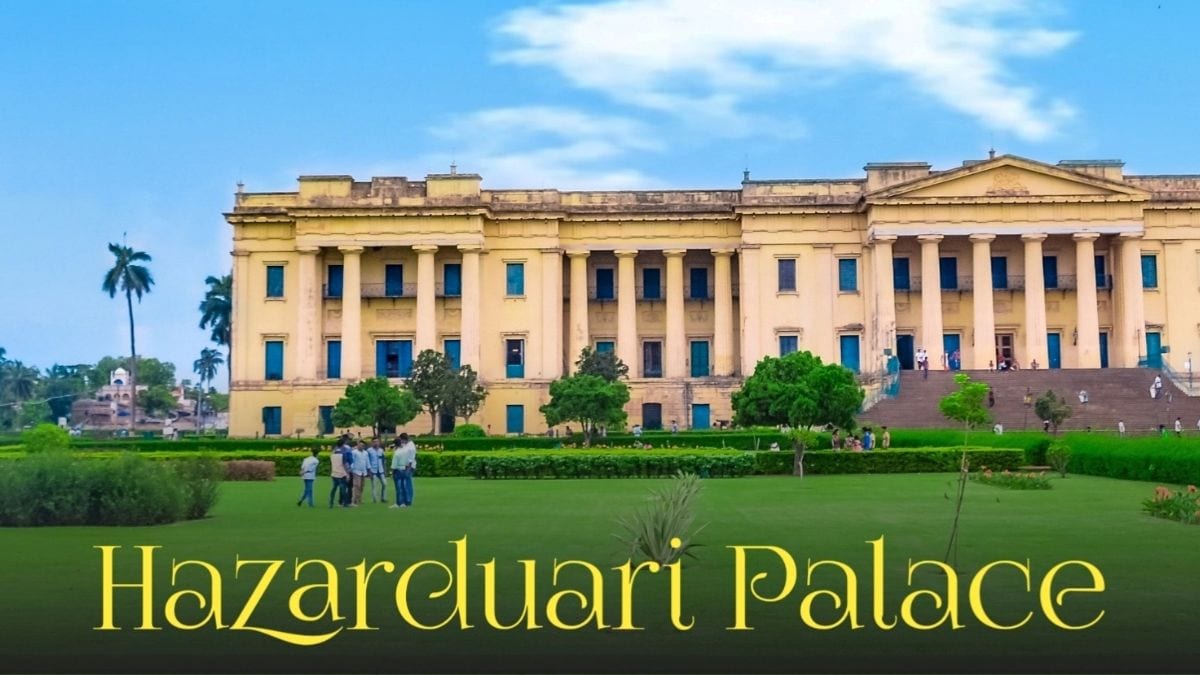
Photo Credit: murshidabad.gov.in
Top 10 Things To See In Murshidabad:
Murshidabad is best explored on foot, by electric rickshaw, or as part of a pre-arranged heritage trail. Here is what you should not miss:
1. Hazarduari Palace:
Built in 1837 by Nawab Nazim Humayun Jah, this Indo-European palace boasts 1,000 doors, though only 900 are real. Today, it is a museum housing over 20,000 artefacts, including weapons, oil paintings, Nawabi attire, and Siraj-ud-Daulah's sword.
2. Nizamat Imambara:
Considered one of the largest Imambaras in India, it was built in 1847. Though entry may be restricted at times, its white domes and arches look stunning in photographs.
3. Katra Mosque:
Built by Murshid Quli Khan in 1724, this mosque has an austere charm with minarets and stone stairways. His grave lies beneath the entrance steps.
4. Motijheel (Pearl Lake):
A serene, horseshoe-shaped lake where Nawabs once built pleasure palaces. It also played host to British officers like Warren Hastings, with remnants of old structures still standing.
5. House Of Jagat Seth:
Known as the "Rothschilds of Bengal", the Seth family wielded immense financial power. Their mansion, now a museum, features coins, muslin textiles, and tales from India's political past.
6. Kathgola Palace:
This Jain merchant's estate features French-Bengali architecture, manicured gardens, and a small zoo. Inside the palace you will find murals, antique furniture, and the beautifully preserved Adinath Jain temple.
Also Read: 7 Historic Cities Settled On The Banks Of The Ganga River
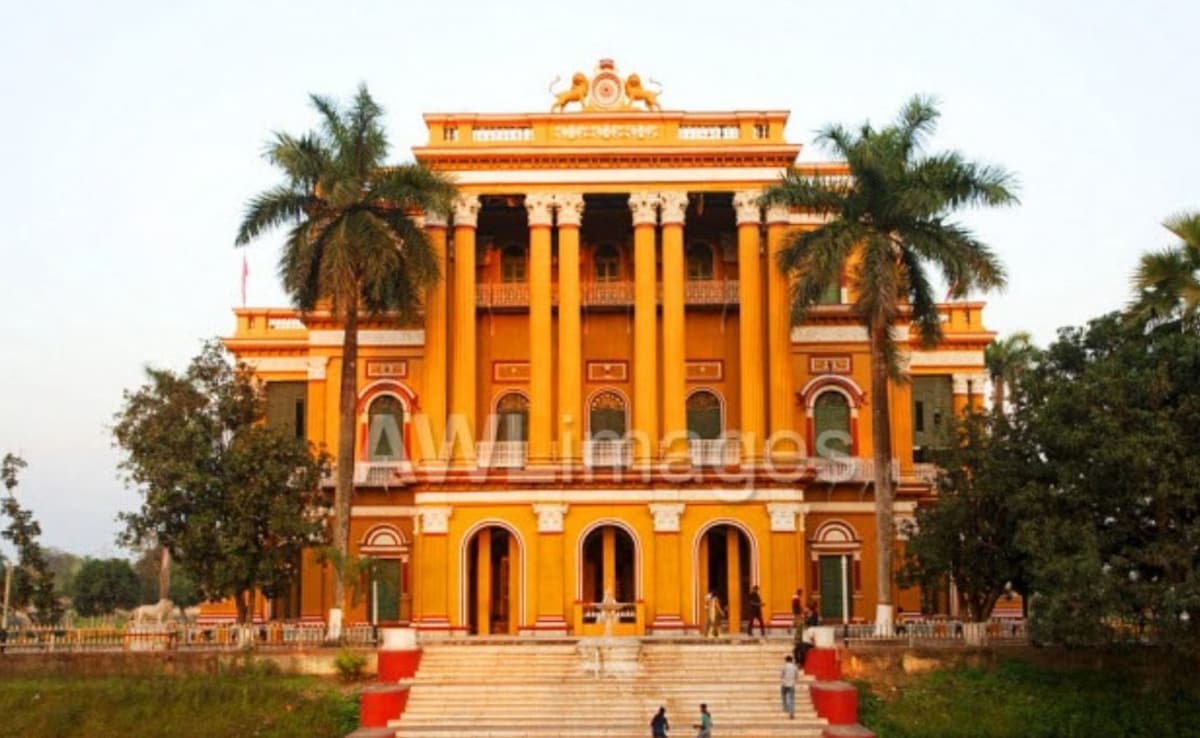
Photo Credit: murshidabad.gov.in
7. Jafarganj Cemetery:
A tranquil site with over 1,000 graves, including that of Mir Jafar, whose betrayal of Siraj-ud-Daulah altered the course of India's colonial history.
8. Murshidabadi Silk Heritage:
Murshidabad has been a renowned silk-weaving centre since the 13th century, producing fine mulberry silk that once rivalled Chinese exports. In 2024, its Gorod and Korial silk sarees were conferred with a GI tag. Other legacy Murshidabadi silk sarees include Baluchari and Swarnochuri, known for mythological motifs and intricate zari work.
9. Murshidabadi Mango Orchards:
Murshidabad is one of Bengal's top mango-growing districts, with over 150 varieties cultivated across Azimganj and Jiaganj. While summer here can be harsh, it also brings a delicious bounty, from fragrant Gulabkhas to the coveted Kohitoor. Each variety is delicious and carries a Nawabi-era story. If you are visiting in June, do not miss local mango trails and roadside stalls.
10. Sheherwali Culture And Food:
The Sheherwalis, Jain merchants from Rajasthan, settled in Murshidabad around 300 years ago, shaping a unique cultural blend. Their cuisine, still available at heritage stays like Bari Kothi, fuses Rajasthani, Bengali, and Nawabi influences with strict vegetarian traditions. Signature Sheherwali dishes include kheere ki kachori, kachhe aam ki kheer, and paniphal ka samosa.
Also Read: 7 Places To Learn About The History Of India
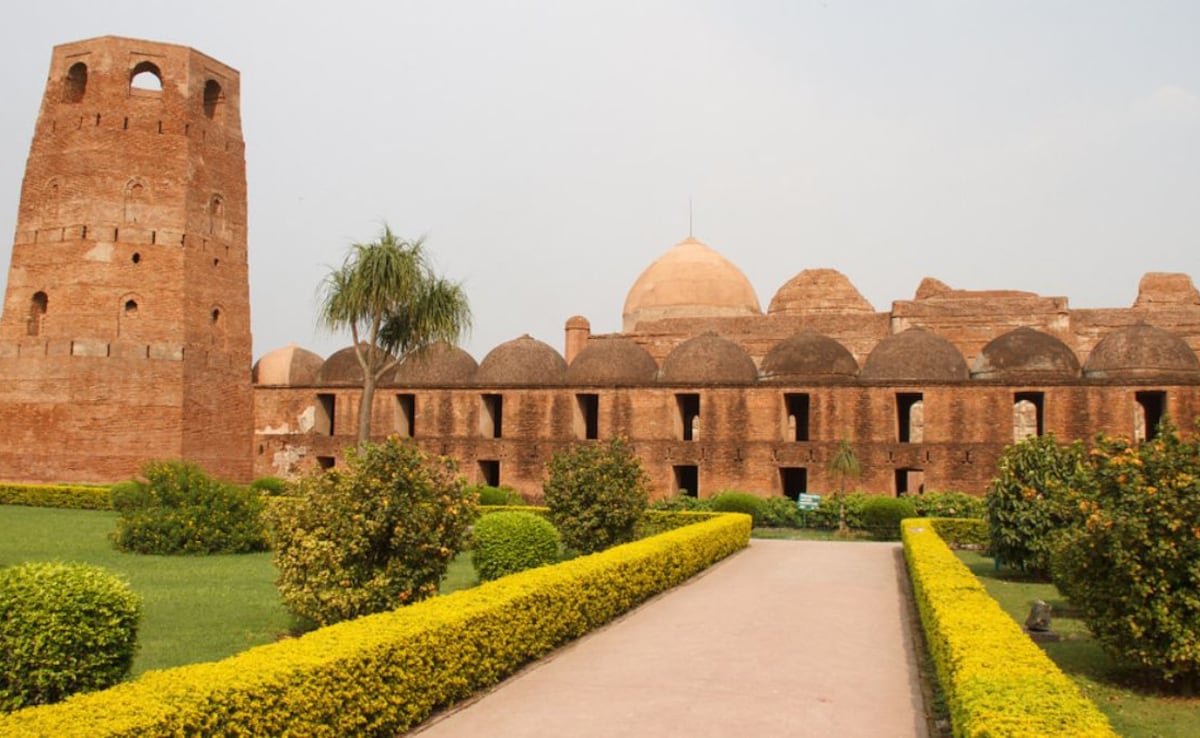
Photo Credit: murshidabad.gov.in
Where To Stay In Murshidabad:
While Murshidabad is still developing as a tourist destination, a few heritage and budget options stand out.
Bari Kothi in Azimganj is a beautifully restored Sheherwali mansion offering immersive cultural stays, heritage meals, and curated walks. For budget-conscious travellers, Hotel Manjusha, located near Hazarduari, is a simple, well-located option. Travellers who prefer a slightly bigger town can also find comfortable hotels in Baharampur, about 10 km away.
What To Buy In Murshidabad (Beyond Silk):
Silk sarees are the main draw, but Murshidabad's bazaars also offer charming keepsakes. Look for sholapith handicrafts - intricate floral decorations made from a water plant, often used in Bengali weddings. You may also find bell metal utensils, ivory-style carvings, and small quantities of handmade Murabba or pickles from Jain households. Do not forget to try and carry back mishti like sitabhog and chhanar jilipi.
Cultural Tips For Travellers:
Murshidabad remains a deeply traditional town, so a little cultural sensitivity goes a long way.
- Some Sheherwali homes and kitchens follow strict Jain customs, which means no onion, garlic, root vegetables, or fermented items.
- While visiting mosques and Imambaras, modest clothing is recommended, and shoes must be removed.
- Many local shops and eateries pause operations briefly during the afternoon namaz. Plan your meal and shopping breaks around it.
How To Reach Murshidabad:
By Train:
Murshidabad is on the Sealdah-Lalgola line. Opt for trains like the Hazarduari Express, Bhagirathi Express, or Dhanodhanya Express from Kolkata.
By Road:
State-run and private buses regularly ply from Kolkata, Berhampore, and other towns. The drive from Kolkata takes approximately 4 to 5 hours via NH12.
By Air:
The nearest airport is Netaji Subhash Chandra Bose International Airport in Kolkata (about 195 km). From there, one can take a train, hire a cab, or board a bus to reach Murshidabad.
Best Time To Visit Murshidabad
The best time to explore Murshidabad is October to March, when the weather is pleasant and perfect for sightseeing. This period also aligns with festivals like Durga Puja, Kali Puja, and Eid, enriching the cultural experience.
While July to September bring heavy rains and flooding in certain areas, April to June ushers in extreme heat. That said, early summer is ideal for mango lovers.
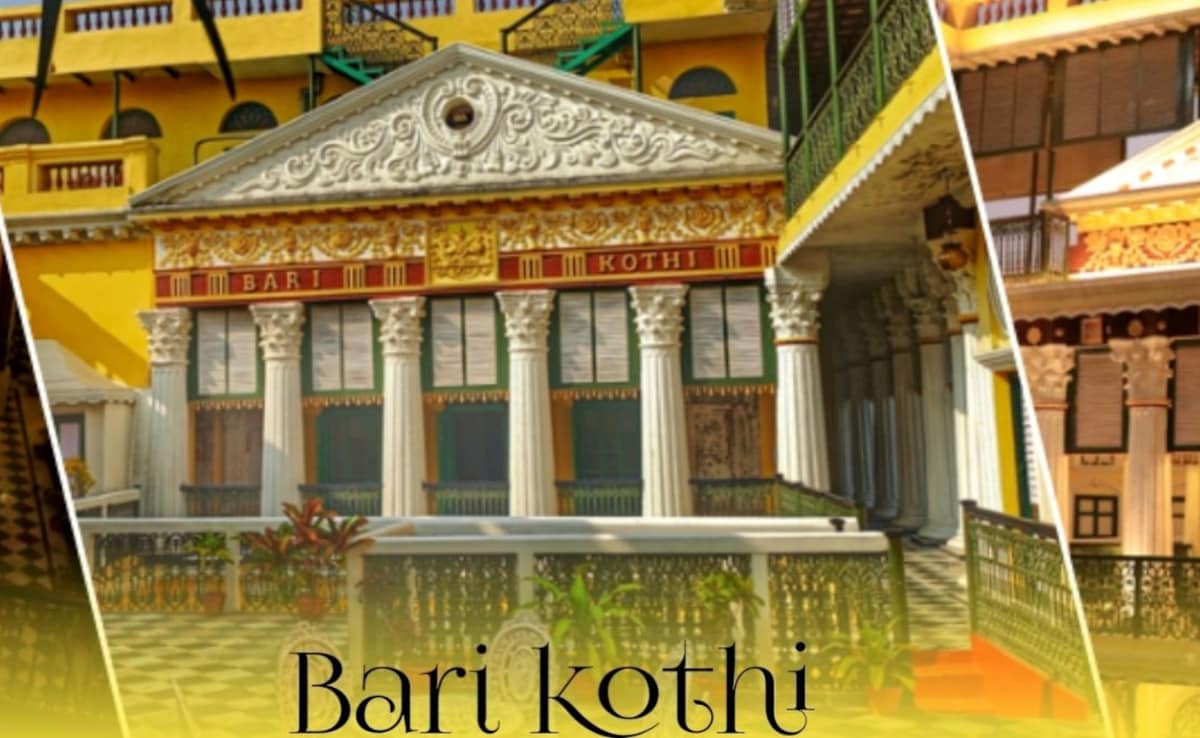
Photo Credit: murshidabad.gov.in
One-Day Itinerary For Murshidabad
Planning a quick weekend escape from Kolkata? Here is how to make the most of your day:
8:00 am: Breakfast at a local eatery. Have luchi-aloo tarkari, jilipi and mishti doi
9:00 am: Tour Hazarduari Palace and museum
11:00 am: Walk to Nizamat Imambara and Madina Mosque
12:30 pm: Visit the Katra Mosque
1:30 pm: Lunch at a local dhaba or heritage stay like Bari Kothi. Try murgi biryani, shorshe ilish, or the Sheherwali thali
2:30 pm: Explore Kathgola Palace and Jagat Seth House
4:00 pm: Unwind at Motijheel, sip chai by the lake or take a boat ride
6:00 pm: Shop for Murshidabad silk sarees, sholapith crafts, and local sweets. And then call it a day.
Murshidabad is a living archive of West Bengal's grandeur, ambition, and grace. From palace corridors to mango orchards, every experience in this town tells a layered story. So, pack your curiosity, charge your camera, and experience the forgotten capital of Bengal.
Track Latest News Live on NDTV.com and get news updates from India and around the world

